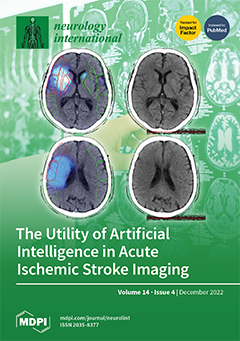Background: Brain clots retrieved following endovascular thrombectomy in acute ischemic stroke patients may offer unique opportunities to characterise stroke aetiology and aid stroke decision-making in select groups of patients. However, the evidence around the putative association of clot morphology with stroke aetiology is
[...] Read more.
Background: Brain clots retrieved following endovascular thrombectomy in acute ischemic stroke patients may offer unique opportunities to characterise stroke aetiology and aid stroke decision-making in select groups of patients. However, the evidence around the putative association of clot morphology with stroke aetiology is limited and remains inconclusive. This study aims to perform a systematic review and meta-analysis to delineate the association of brain clot composition with stroke aetiology and post-reperfusion outcomes in patients receiving endovascular thrombectomy.
Methods: The authors conducted a systematic literature review and meta-analysis by extracting data from several research databases (MEDLINE/PubMed, Cochrane, and Google Scholar) published since 2010. We used appropriate key search terms to identify clinical studies concerning stroke thrombus composition, aetiology, and clinical outcomes, in accordance with Preferred Reporting Items for Systematic Reviews and Meta-Analyses (PRISMA) guidelines.
Results: The authors identified 30 articles reporting on the relationship between stroke thrombus composition or morphology and aetiology, imaging, or clinical outcomes, of which 21 were included in the meta-analysis. The study found that strokes of cardioembolic origin (SMD = 0.388; 95% CI, 0.032–0.745) and cryptogenic origin (SMD = 0.468; 95% CI, 0.172–0.765) had significantly higher fibrin content than strokes of non-cardioembolic origin. Large artery atherosclerosis strokes had significantly lower fibrin content than cardioembolic (SMD = 0.552; 95% CI, 0.099–1.004) or cryptogenic (SMD = 0.455; 95% CI, 0.137–0.774) strokes. Greater red blood cell content was also significantly associated with a thrombolysis in cerebral infarction score of 2b–3 (SMD = 0.450; 95% CI, 0.177–0.722), and a positive hyperdense middle cerebral artery sign (SMD = 0.827; 95% CI, 0.472–1.183). No significant associations were found between red blood cell, platelet, or white blood cell content and aetiology, or between clot composition and bridging thrombolysis.
Conclusions: This meta-analysis found that fibrin composition is significantly higher in strokes of cardioembolic and cryptogenic origin, and that red blood cell content is positively associated with the hyperdense middle cerebral artery sign and better reperfusion outcomes. Important advances to stroke clinical workup can be derived from these findings, in which many aspects of stroke workflow remain to be optimised. As data are still limited in terms of the association of various thrombus components with stroke aetiology as well as a standardised method of analysis, further studies are required to validate these findings to guide their use in clinical decision-making.
Full article






